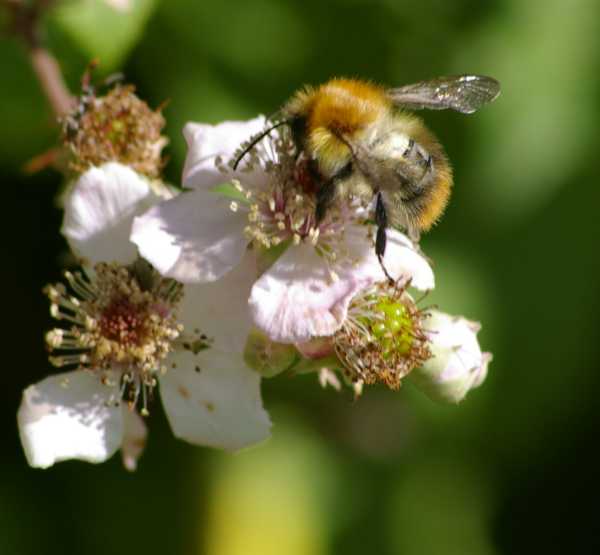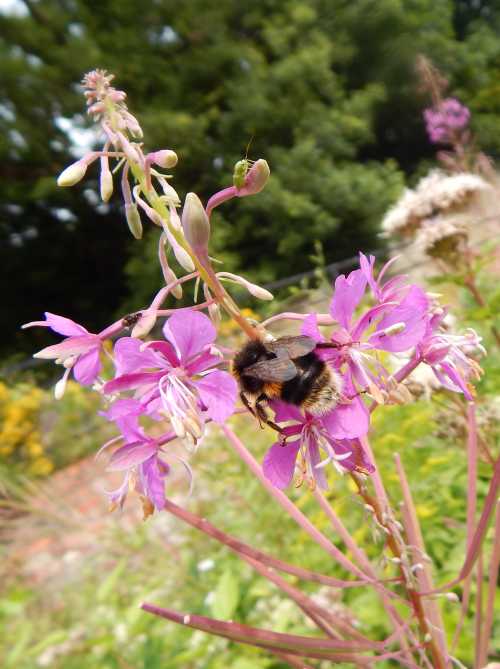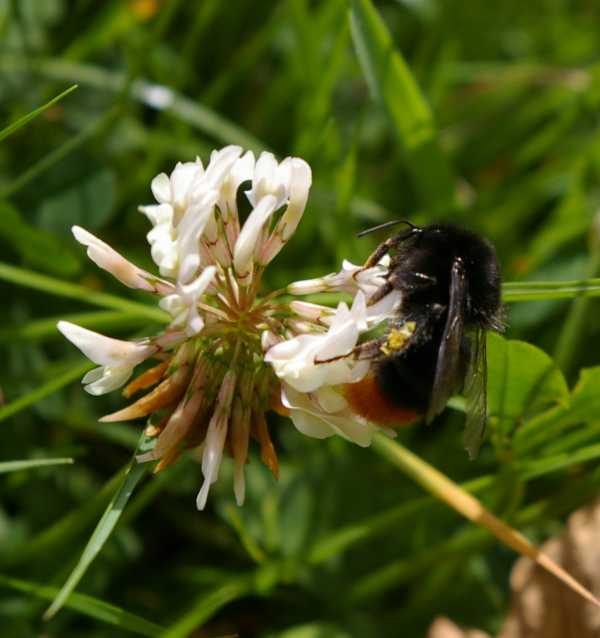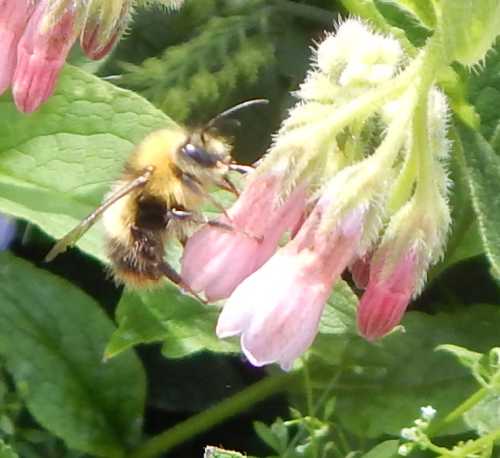A Comparison Of Sugar Content Of Flower Nectars For Bees And Pollinators
The sugar content in nectar is a vitally important food source for bees (especially adult bees), whilst pollen provides protein and fats.
Nectar primarily contains water as well as sugars. However, there are different types of sugar, and the proportions of these sugars can differ, depending on the flower.
Which Sugars Are Present In Nectar And Do Bees Have A Preference?
A study dating back to 1952 had already shown that sucrose, glucose and fructose were not equally attractive to bees (specifically honey bees), but that bees appeared to prefer a mixture of the sugars1.
Furthermore, the study asserted that consistent preferences were shown for solutions of single sugars with the most preferred being: sucrose, followed by glucose, maltose, and then fructose.
These results occurred even though the overall concentration of sugars remained the same.
 Common Carder Bumble Bee on bramble flower
Common Carder Bumble Bee on bramble flowerSugar Content Of Nectar From Different Plant / Shrub / Tree Blossoms
The volume of nectar on offer to bees and other pollinators has been shown to fluctuate with the development of the plant and blooming period of the flowers, for example, in a study of Rubus flowers (blackberry - see my page about bees and bramble for more information).
However, sugar concentrations can also be variable2.
For example, analysis of a wildflower plant attractive to pollinators, Chamaenerion angustifolium Scop. (rosebay willow-herb) found that sugar concentration (grams per 100ml) fluctuated during 4 different time periods2.
The sugar concentration varied for this plant between 18.4 g/100ml (the last sample analysed) and peaked at 41.4 g/100ml from the third sample taken2.
 Rosebay Willowherb is attractive to bees and other pollinators.
Rosebay Willowherb is attractive to bees and other pollinators.Sugar Concentration Of Various Plants
Of course, it's beyond the scope of this website to list the sugar content of more than a handful of flowers.
In addition, it must be noted that flowers can be valuable to bees and pollinators for a variety of reasons.
For example, some flowers may provide a slightly lower sugar concentration than another species, yet provide a greater volume of nectar overall, or for a longer period.
Other plants may provide nectar during times of the year when few other sources are available, such as during winter months.
Furthermore, some bees are dependent on particular flowers for other substances, such as oils (e.g. the Yellow Loosestrife Bee - Macropis europaea).
However thanks to Wykes et al (1952)2 the following handful can provide interesting insight into sugar concentrations of some nectars:
|
Sugar Concentration Range | |
|
Rubus fruticosus L. agg. (blackberry) |
15.4 to 45.4 |
|
Trifolium repens (white clover) |
25.4 to 39.3 |
|
T. pratense (red clover) |
8.3 to 29.6 |
|
R. loganobaccus H. Bailey (loganberry) |
17 to 51.4 |
|
Borago offlcinalis (borage) |
21.6 to 28.8 |
|
Pycnanthemum pilosum Nutt. (mountain mint) |
14.01 to 26.4 |
|
Lavandula spica (lavender) |
24 to 32.4 |
|
Hedera helix (ivy) |
10.4 to 11.53 |
|
Sinapis alba (white mustard) |
9.3 to 17.6 |
|
Tilia x vulgaria Hayne (common lime) |
21 to 42.2 |
 Red-tailed Bumble Bee foraging on White clover
Red-tailed Bumble Bee foraging on White cloverDo Native Plants Provide More Nectar For Bees?
Not necessarily!
However, it is correct to state that some bee species in a given location may have particular foraging requirements , and may be monolectic (obtaining pollen from a single plant species).
This issue is covered in greater detail on my page about whether native or non-native plants are better for bees and pollinators.
References
1. G. R. WYKES; The Preferences of Honeybees for Solutions of Various Sugars Which Occur in Nectar. J Exp Biol 1 December 1952; 29 (4): 511–519. doi: https://doi.org/10.1242/jeb.29.4.511
2. The Sugar Content of Nectars BY G. R. WYKES Bee Re8earch Department, Rothamsted Experimental Station, 1952.
Articles about bees and foraging
- Why Do Bees Need Nectar And Pollen? A look at this question from the perspective of different types of bees.
- Plants Toxic For Bees It may surprise readers to learn that some plants produce nectar which is toxic or at least harmful, to bees. Here is a list of plants detrimental to bees, and discussion as to the theories about why plants might produce nectar that would harm potential pollinators.
- Why do bees visit some flowers and not others? Here are 6 reasons Reasons include: Food reward offered, nectar refill rate of the flower, foraging preferences of the bee species, seasonality, and peak nectar production.
- Which Lime Trees Are Toxic For Bees? Which Lime Trees Are Toxic For Bees - some species may be great for bees whilst others are not.
- Nectar Robbing And Secondary Robbing Comfrey Films of different bees nectar robbing and secondary robbing comfrey.
- Do Bees Visit Yellow Flowers? Examples of yellow flowering plants and shrubs visited by bees.
If you found this page helpful or interesting, I'd really be grateful if you would share it with others - if not this page, perhaps another, such as Gardening For Bees.
Thank you so much :) .
